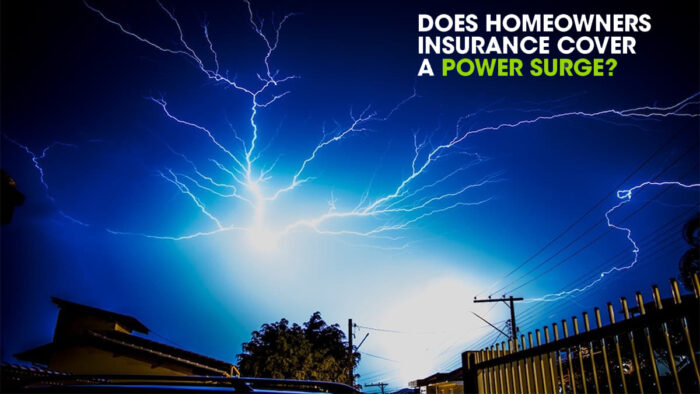If you are a homeowner, it’s important to understand that your home insurance policy may provide coverage for damages caused by a power surge. However, the specifics of the coverage may vary depending on the cause of the surge. If a power surge occurs due to a lightning strike, your homeowners insurance policy may cover any damage that occurs up to the policy’s limits.

On the other hand, if the power surge is caused by an issue with your home’s electrical system, the coverage may be different.
To ensure that you are fully protected, it’s essential to review your home insurance policy carefully and understand the specifics of the coverage. If you have any questions or concerns, don’t hesitate to contact your insurance provider for clarification.
It’s always better to be safe than sorry when it comes to protecting your home and belongings from unexpected damage. Remember, power surges can happen at any time and without warning, so it’s crucial to be prepared and know what your insurance policy covers.
What is a Power Surge?
A power surge is an abrupt increase in voltage that courses through your home’s electrical system. This sudden spike in electricity can be detrimental to electronic devices and appliances that are connected to a wall socket at the time of the surge.
In severe cases, a power surge can not only damage outlets and electrical wiring but can also ignite a fire.
Power surges can be triggered by several factors, including:
- Lightning strikes: If your home is struck by lightning, the power lines leading into your home, or even your telephone lines, it can result in a power surge.
- Utility company issues: Several electrical issues related to your local power company can lead to a surge, such as malfunctions in transmission lines in your neighborhood, switching surges caused by changes in the electrical load, and maintenance work or power grid switching.
- Faulty wiring: Power surges can also be caused by aging or malfunctioning wiring within your home.
To safeguard your home and belongings, it is crucial to be aware of the potential causes of power surges and take the necessary precautions to prevent damage.
What Types of Damage Can Power Surges Cause in a Home?
Power surges can lead to significant damage to a home, including harming and/or destroying appliances and other electrical devices connected to an outlet. In addition, power surges can spark small fires at the point of the surge, which can escalate into larger house fires. To protect your belongings and home, it’s advisable to unplug all electronics during a storm.
Although lightning may not directly cause a power surge, the restoration of power after a power outage or blackout due to a lightning strike or storm can result in a surge. It’s important to note that the damage caused by power surges can be extensive and costly, so it’s crucial to take preventive measures to safeguard your home and belongings.
How Does Homeowners Insurance Cover Power Surge Damage?
Home insurance policies typically provide coverage for damage caused by power surges through personal property coverage (Coverage C), which may assist in the event of damage to appliances or other electronic devices.
Power surges often occur at the connection point of plugs to outlets, but they can also affect aging wiring within the walls of a home. This type of damage may be covered by homeowners dwelling coverage (Coverage A), which can also help with built-in appliances like furnaces or water heaters.
In the event of a prolonged power outage caused by a power surge, homeowners insurance policies may offer loss of use coverage, which can help cover the costs of living elsewhere while the outage is being repaired. It’s essential to review your policy carefully and understand the specifics of your coverage to ensure that you are adequately protected against power surge damage.
What Happens if the Power Surge is Caused by the Electric Company?
The coverage for power surge damages can vary depending on the specifics of your home insurance policy. If the power surge was caused by the electric company, it’s advisable to reach out to your insurer to determine if your policy covers electrical load surges from utility companies as a peril.
Additionally, it’s important to contact your utility company to understand their claims process in case of a power surge. While some electrical companies provide surge protection as part of the monthly bill, not all do, so it’s essential to verify the extent of your coverage. By taking these steps, you can ensure that you are adequately protected and informed about the coverage and procedures in the event of a power surge caused by the electric company.
Does Homeowners Insurance Cover Artificially Generated Surges?
Power surges caused by your local electric company during maintenance work are known as artificially generated surges. If such a surge results in damage to your home, your home insurance policy may provide coverage for the losses.
However, it’s important to note that some insurance policies may exclude coverage for damage to specific components inside electronic devices, such as tubes, transistors, and other parts that are essential for their functioning. If an artificially generated current caused the surge, the insurance company may not cover the damage to these components.
To avoid any confusion, it’s recommended to check with your insurance agent or company to clarify the specifics of your coverage and understand how it works in the event of an artificially generated surge. By doing so, you can ensure that you have the necessary protection and are aware of any potential limitations or exclusions in your policy.
How Do I File an Insurance Claim for Power Surge Damage?
To file an insurance claim for power surge damage, follow these steps:
- Decide whether to file a claim for the damages caused by the lightning strike or power surge.
- If you choose to file a claim, contact your insurance company by phone or online to initiate the process.
- Document the damage to your home, electronics, and appliances for your claim.
- Take photos and videos of the damage and include them with your claim.
- An adjuster may be dispatched to your home to inspect the damage.
It’s important to note that the specific claim process can vary by insurer, so be sure to check with your insurance company for any additional requirements or steps. By following these steps, you can ensure that you have the necessary documentation and information to support your claim and receive the coverage you need for the damages caused by the power surge.
FAQs
What is equipment breakdown coverage, and how does it relate to power surge damage?
Equipment breakdown coverage is a policy endorsement that offers protection for appliances, electronics, and other items from power surges, short circuits, and other electrical issues that may not be covered by a standard policy. It can provide added protection for homeowners concerned about power surge damage.
What are some proactive steps homeowners can take to prevent power surge damage?
Homeowners can install point-of-use surge protection devices (SPDs), periodically check their plugs and wiring, install surge-protected outlets, replace surge protectors every few years, and install a lightning protection system in their house to help prevent power surge damage.
What is the difference between a direct and an indirect power surge?
A direct power surge is caused by a direct electrical connection between the power source and the device, while an indirect power surge is caused by a nearby electrical event, such as a lightning strike or utility company issue. Both types of surges can cause damage to electronics and appliances, but indirect surges are more common.



